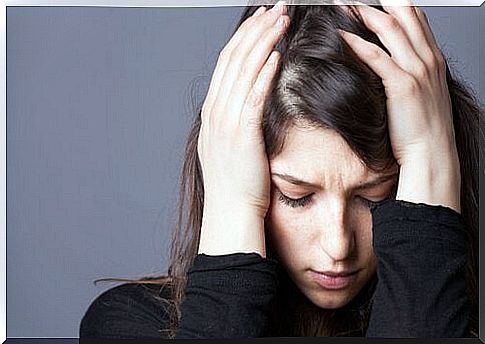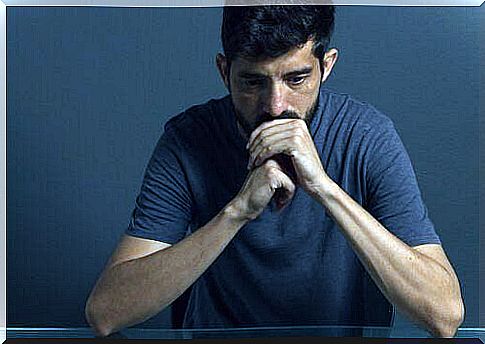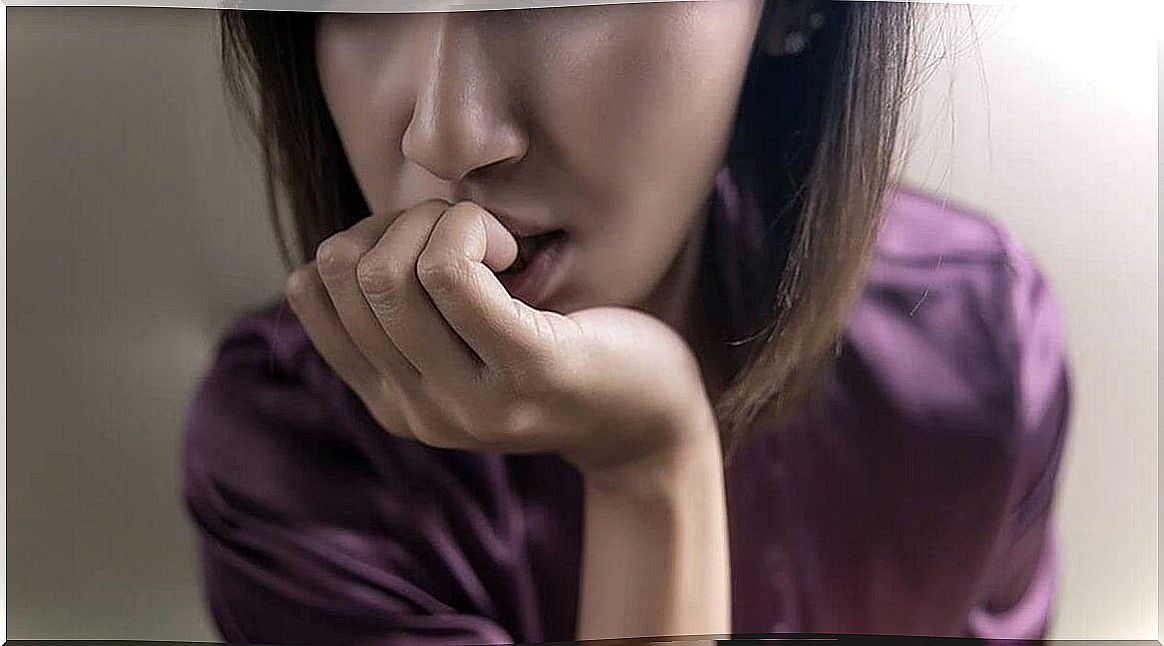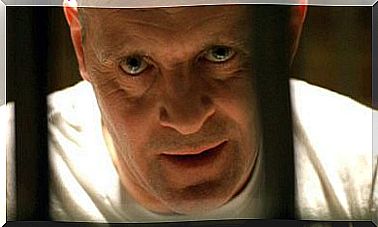Mixed Anxiety And Depressive Disorder: Definition, Causes, And Treatment

The mixed anxiety and depressive disorder has generated great controversy in relation to its concept, which has not been adopted by all existing diagnostic classifications. This does not mean that its existence has not been recognized, but it is sometimes considered to be a depressive disorder with secondary anxiety features rather than a single disorder.
In mixed anxiety and depressive disorder, symptoms of anxiety and depression are present, but none of them clearly predominates or is sufficiently intense to justify a separate diagnosis.
This disorder manifests itself through a mixture of relatively mild symptoms.
The combination of depressive and anxiety symptoms causes a significant compromise in the life of the person suffering from this disorder. However, opponents of this diagnosis argue that the existence of this concept discourages physicians from taking the time necessary to take a complete psychiatric history. A background that, in turn, allows us to differentiate true depressive disorders from anxiety disorders.
When is mixed anxiety and depressive disorder diagnosed?
To make the diagnosis, it is necessary to verify the presence of anxiety symptoms and low intensity depression. In addition, there needs to be a vegetative symptomatology, such as tremors, palpitations, dry mouth and a feeling of upset stomach.
Some preliminary studies have indicated that the general practitioner’s sensitivity for identifying mixed anxiety and depressive disorder syndrome is low. However, perhaps this difficulty reflects the lack of proper name recognition for the diagnosis of these patients.

Symptoms of mixed anxiety and depressive disorder
The clinical manifestations of this disorder combine symptoms of anxiety disorders and symptoms of depressive disorders. In addition, symptoms of hyperactivity of the autonomic nervous system, such as gastrointestinal disturbances, are frequent. This means that people who suffer from this disorder are often seen in doctors’ offices.
DSM-IV criteria for mixed anxiety and depressive disorder
The Diagnostic and Statistical Manual of Mental Disorders (DSM) proposes a series of criteria for diagnosing this disorder. On the other hand, as already mentioned, the objective of establishing these criteria is investigative. Let’s see what they are.
Rather, it must be emphasized that the fundamental characteristic of this disorder is a persistent or recurrent dysphoric mood that lasts for at least 1 month. This state of mind is accompanied by complementary symptoms of the same duration, among which are included at least four of the following symptoms:
- Difficulty concentrating or memorizing, sleep disorders, fatigue or lack of energy.
- Marked irritability.
- Recurrent and intense worry.
- Easy crying, lack of hope or pessimism about the future, and low self-esteem or feelings of worthlessness.
- Hypervigilance, anticipation of danger.
These symptoms cause significant clinical discomfort or impairment in social, professional, or other important areas of the person’s activities. On the other hand, mixed anxiety and depressive disorder should be discarded when the symptoms are physiological effects of some substance or medical condition, or if at some point the individual met the diagnostic criteria for major depressive disorder, dysthymia, anguish or generalized anxiety disorder.
This diagnosis should also not be given if at the same time the patient’s symptoms fit with any other anxiety or mood disorder, even when they are in partial remission.
It is also necessary that the symptoms cannot be better explained by the presence of another mental disorder. Most of the initial information about this condition was collected in primary care centers, where the disorder appears to be more frequent. It is also likely to have a higher prevalence among outpatients.

What is the incidence of mixed anxiety and depressive disorder?
The coexistence of a major depressive disorder and an anxiety disorder is very common. Two-thirds of patients with depressive symptoms have clear symptoms of anxiety. One-third fit the diagnostic criteria for anxiety disorder.
Some researchers have reported that 20 to 90% of all patients with anxiety disorders experience episodes of major depressive disorder. These data suggest that the coexistence of depressive and anxiety symptoms that do not meet the diagnostic criteria for depressive or anxiety disorders is very common.
However, at this time, there are no formal epidemiological data on mixed anxiety and depressive disorder. In this case, some researchers have estimated that the incidence of this disorder in the general population is 10%, and 50% in the population receiving primary care. More conservative estimates suggest an incidence of 1% in the general population.
Why does this disorder appear?
Four experimental lines suggest that anxiety symptoms and depressive symptoms are linked to identified causes.
First, several researchers have found similar neuroendocrine causes in depressive and anxiety disorders. Such symptoms include a lesser slope of the cortisol response to adrenocorticotropic hormone, a lesser slope of the growth hormone response to clonidine, and a lesser slope of thyroid-stimulating hormone and prolactin responses to thyrotrophin-releasing hormone.
Second, several researchers have presented data that identify hyperactivity of the noradrenergic system as a relevant factor in the origin of depressive and anxiety disorders in some patients.
Specifically, these studies found that depressed and distressed patients who were actively experiencing a distress crisis had elevated concentrations of the noradrenaline metabolite (MHPG) in urine, plasma, or cerebrospinal fluid.
As with other depressive and anxiety disorders, serotonin and gamma-aminobutyric acid (GABA) may also be associated with mixed anxiety and depressive disorder.
Third, many studies have found that serotoninergic drugs, such as fluoxetine and clomipramine, are useful in treating both depressive and anxiety disorders. Finally, several family studies have presented data indicating that anxiety and depressive symptoms are genetically related, at least in some families.
The development and prognosis of the disease
According to current clinical information, it appears that in the beginning patients may be equally likely to have anxiety-predominant symptoms or depression-predominant symptoms, or a proportionate mixture of both.
During the course of the disease, the predominance of symptoms of anxiety and depression would alternate. It is not yet known what the prognosis is. Separately, depressive and anxiety disorders tend to become chronic without adequate psychological treatment.
Treatment of mixed anxiety and depressive disorder
As there are no adequate studies comparing treatment modalities for mixed anxiety and depressive disorders, physicians tend to offer treatment according to symptoms, severity of symptoms and previous experience with different treatment modalities.
Psychotherapeutic approaches can be time-limited, such as cognitive or behavioral therapies. In contrast, some physicians use a less structured psychotherapeutic approach, such as introspective psychotherapy.
Pharmacological treatment
The pharmacological treatment of mixed anxiety and depressive disorders is based on anxiolytics, antidepressants or both. Among anxiolytics, some data indicate that the use of benzodiazepines (eg, alprazolam) may be indicated due to their efficiency in the treatment of depression associated with anxiety.
Substances that affect the 5-HT receptor, such as buspirone, may also be indicated. Among antidepressants, serotonergics (eg, fluoxetine) can be very effective in treating mixed anxiety and depressive disorder.

Psychological treatment
Anyway, the treatment of choice for this type of pathology is cognitive-behavioral psychotherapy. On the one hand, the goal is for the patient to be able, in the first instance, to reduce his level of physiological activation. This is accomplished through breathing techniques (eg diaphragmatic breathing) and relaxation techniques (progressive muscle relaxation, autogenous training, mindfulness, etc.).
Second, the patient needs to improve his mood. This can be done in different ways. Behavioral activation therapy can be very effective in this regard. It involves the patient returning to his previous level of activity. For this, he is encouraged to carry out pleasant activities, either resuming or starting to participate in some new activity little by little.
Thirdly, a period of psychoeducation is very helpful. During this period, the patient is explained what is happening to him and why. It is about offering basic notions about the characteristics of anxiety and depression so that the patient can formalize their experience.
After that, it may be necessary to change some beliefs or thoughts that may be keeping the problem going. This can be done using the cognitive restructuring technique.
Finally, mixed anxiety and depressive disorder is treatable and, if not treated in time, can become chronic.
Bibliography:
Bobes Garcia, J. (2001). Anxiety disorders and depressive disorders in primary attention. Barcelona, etc.: Masson.
Derogatis, LR, & Wise, TN (1996). Depressive and anxiety disorders in primary care. Barcelona: Martinez Roca.
Miguel Tobal, JJ (1990). The anxiety. In J. Mayor and JL Pinillos (Eds.). Treaty of General Psychology. (Vol.3). Motivation and Emotion. Madrid: Alhambra.









